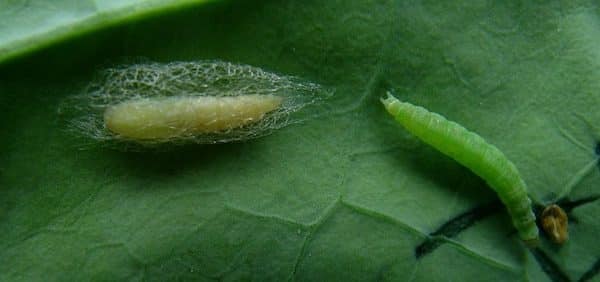Diamondback moth larvae have been found in many fields this year. In most cases counts have been well below economic thresholds, but keep looking just in case. Some fields are at thresholds and a few have been sprayed.
With a few lifecycles per year, diamondbacks can flare up – especially with warm, dry conditions that suit successful reproduction. (The Canola Encyclopedia has a good description of what they look like and their lifecycle.)
Thresholds for diamondback moth larvae are 100-150 larvae per square metre (10-15 per square foot) in immature to flowering plants and 200-300 larvae per square metre (20-30 per square foot) in plants with flowers and pods. Plants under moisture stress may be more likely to suffer yield loss, so the lower threshold number could be used in this situation.
Before taking counts, look for consumed leaves and feeding on buds and pods. Diamondback larvae will move to buds and then pods as leaves are eaten up or dried off. Pod feeding is the only feeding likely to cause economic damage.
Also look for the worms themselves. While thresholds are not based on sweep net counts, the sweep net will pick up diamondback larvae and can be used to identify the presence of the insect.
Why count? Because seeing a few feeding on pods or in sweep nets may be alarming but counts may not be anywhere near thresholds.
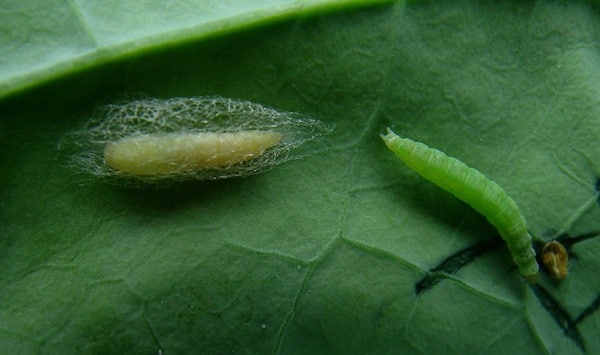
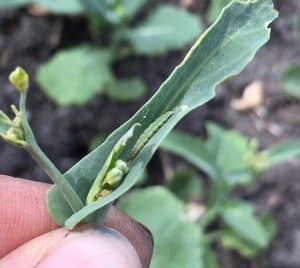
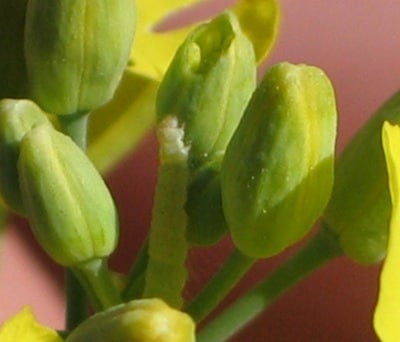
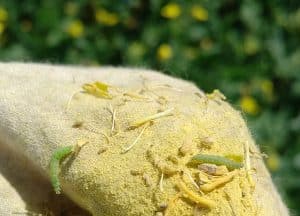
How to count
When counting diamondback moth larvae, pull out all plants within a quarter of a square metre OR one square foot. Knock all plants on the hood of truck, drop-cloth or large piece of cardboard, and count the larvae. Squishing larvae as you count them makes it easier to keep an accurate count. Also count the number that fell to the ground within the square. For counts within a quarter square metre (50cm by 50cm square), multiply by 4 to get the number per square metre. For counts within a square foot, multiply by 10 to get the number per square metre.
Sample a few areas of the field. Note that looking at individual plants only will not give an accurate impression of risk, especially if the plants selected are only those that have obvious signs of larvae damage. Thresholds require a more random approach, which is what you get by sampling all plants within a quarter square metre and checking a few different sites.
Wait for natural control. If diamondback moth larvae are close to thresholds check again in a few days before making a spray decision. Diamondback larvae are small and cannot do the rapid damage that bertha armyworms can do. If diamondback moth larvae are at thresholds, waiting a couple of days can bring a dramatic change in numbers. In that time…
—Rain could wash larvae to the ground where beetles and other beneficials can eat them.
—Parasitic wasps could take over the population. Natural enemies are hard at work on diamondback moth larvae and they often take care of a threat before the pest reaches a yield-robbing level. One specific parasitic wasp, Diadegma insulare, is more successful at moderate temperatures (22°C) than under hotter weather (30°C), so cool wet weather could improve their control of the diamondback moth.
—Many of the worms could pupate. Diamondback moths have relatively short life cycles, but watch if the next generation reaches damaging levels.
However, if you come back in two days and numbers are up and pod feeding has increased, this is a case where spraying is probably warranted.

